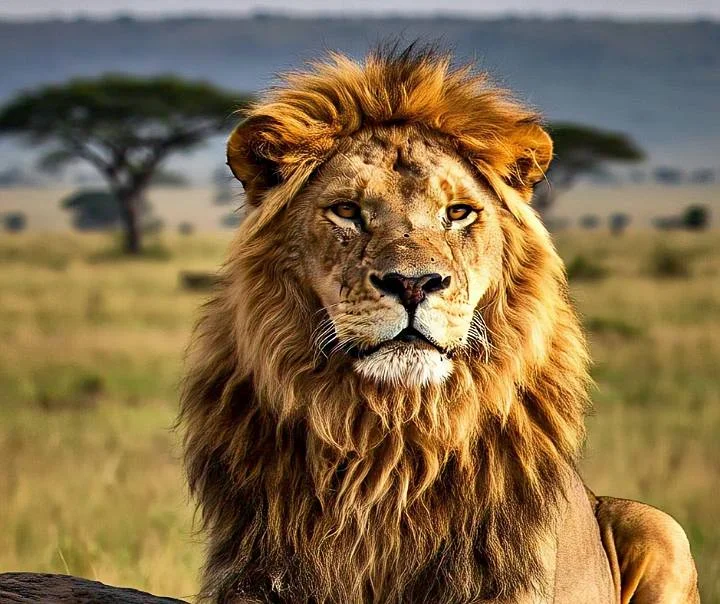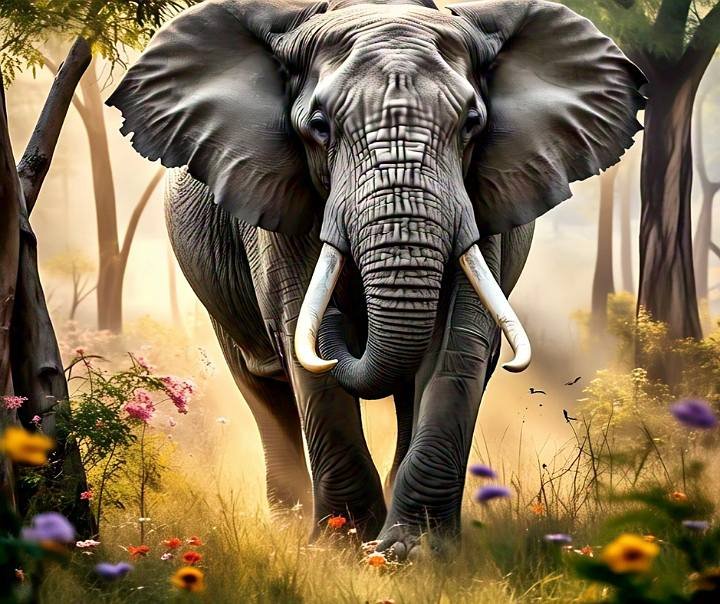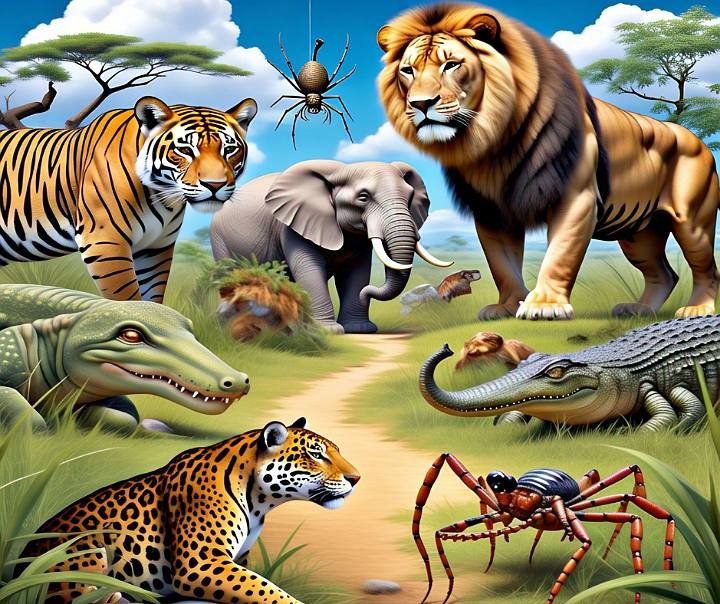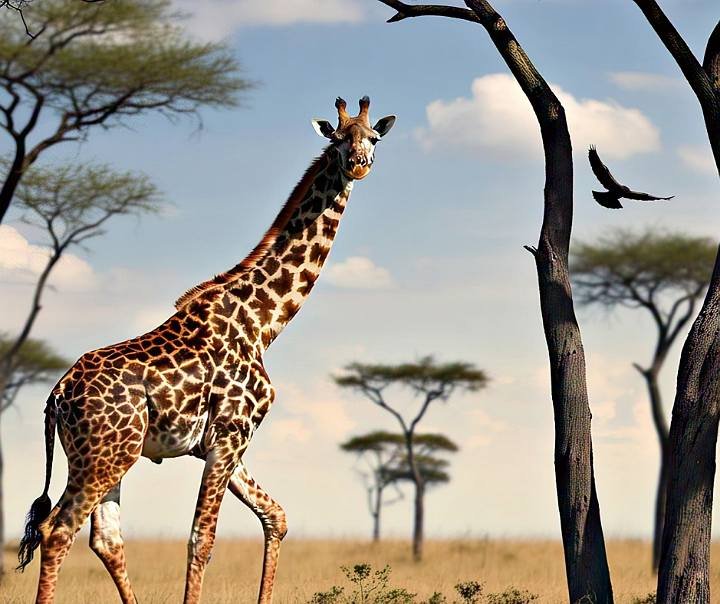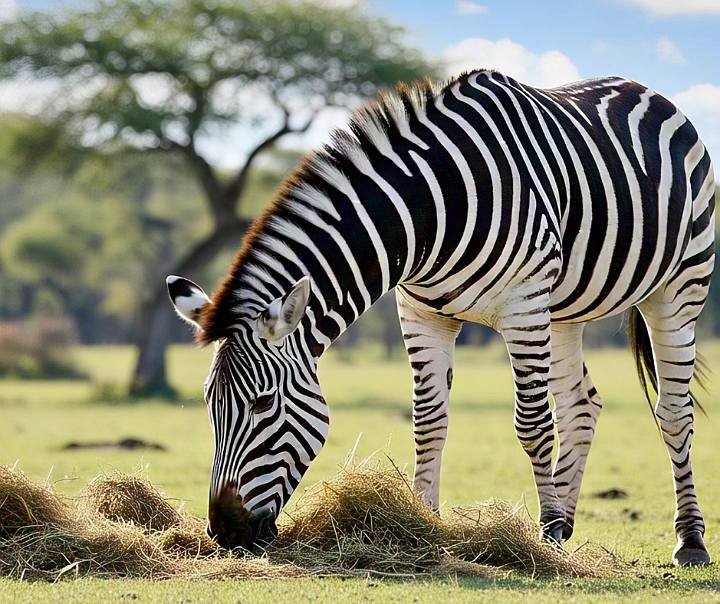Tiger : The Untamed Spirit of the Wild
The tiger (Panthera tigris) is a symbol of raw power, grace, and mystique, reigning as one of nature’s most iconic predators. As India’s national animal, the tiger captivates the imagination with its striking appearance and solitary prowess. This blog post dives deep into the life of tigers, exploring their birth, youth, habitat, diet, reproduction, subspecies, conservation efforts, and intriguing facts that make them truly remarkable.
The Life Cycle of a Tiger
Birth and Early Life
Tiger cubs are born after a gestation period of approximately 90-110 days. A female tiger typically gives birth to 2-4 cubs in a secluded den, such as a cave or dense vegetation. At birth, cubs are blind, weighing about 1-2 kg, and rely entirely on their mother for survival. According to National Geographic, cubs open their eyes within 6-12 days and begin exploring their surroundings by 2 months.
- Maternal Care: The mother tiger nurses her cubs for 6-8 weeks, gradually introducing them to meat. She fiercely protects them from predators like leopards, hyenas, or even male tigers, who may kill cubs to bring the female back into estrus.
- Survival Rate: Only about 50% of cubs survive their first two years due to predation, starvation, or accidents.
Youth and Development
By 6 months, tiger cubs start accompanying their mother on hunts, learning essential skills. Between 1-2 years, they become proficient hunters but remain dependent on their mother. At around 2-3 years, young tigers leave to establish their own territories. Male tigers often roam farther, while females may settle closer to their mother’s range.
- Play and Learning: Cubs engage in playful wrestling and stalking, which hones their hunting instincts. These activities are crucial for physical and social development.
Adulthood
Tigers reach adulthood at 3-5 years, with males maturing later than females. Adult tigers are solitary, except during mating or when females are raising cubs. They are territorial, marking their domain with scent, urine, and scratches on trees. A male’s territory can span 60-100 square kilometers, while females occupy smaller ranges of 20-40 square kilometers, as noted by the World Wildlife Fund (WWF).
Habitat: Where Tigers Roam
Tigers thrive in diverse ecosystems, from tropical rainforests and mangrove swamps to grasslands and temperate forests. They are primarily found in Asia, with significant populations in India, Bangladesh, Nepal, Bhutan, Myanmar, and Russia. India, home to over 70% of the world’s wild tigers, hosts them in renowned reserves like Sundarbans, Ranthambore, Bandhavgarh, and Jim Corbett National Park.
- Adaptability: Tigers are highly adaptable, capable of surviving in extreme climates, from the freezing Siberian taiga to the humid Sundarbans. They prefer areas with dense cover for stalking prey and access to water, as they are excellent swimmers.
- Territory Needs: Tigers require large territories to support their prey base, which is why habitat loss is a significant threat. WWF emphasizes that protecting tiger habitats also benefits other species and local communities.
Diet: The Apex Predator’s Menu
Tigers are obligate carnivores, relying on meat for survival. Their diet primarily consists of large ungulates like deer, wild boar, and buffalo. In some regions, they prey on smaller animals like monkeys, birds, or fish, and occasionally tackle larger prey like young elephants or rhinos.
- Hunting Technique: Tigers are ambush predators, using their camouflaged coat to stalk prey silently. They can leap up to 10 meters and deliver a fatal bite to the neck or throat. A tiger can consume up to 40 kg of meat in one sitting but may go days without eating.
- Impact on Ecosystem: As apex predators, tigers regulate prey populations, maintaining ecological balance. According to National Geographic, a healthy tiger population indicates a robust ecosystem.
Reproduction: Continuing the Legacy
Tigers are solitary but come together for mating. Females are receptive for only a few days every 3-9 weeks, signaling readiness through scent and vocalizations. After mating, the male returns to his solitary life, leaving the female to raise the cubs alone.

- Breeding Age: Females reach sexual maturity at 3-4 years, males at 4-5 years.
- Challenges: Low cub survival rates and habitat fragmentation make reproduction challenging. Conservation programs aim to protect breeding females to ensure population growth.
Tiger Subspecies: Diversity in the Wild
There are six living subspecies of tigers, each adapted to its unique environment:
- Bengal Tiger (Panthera tigris tigris): Found primarily in India, with the largest population. Known for its vibrant coat and adaptability.
- Siberian Tiger (Panthera tigris altaica): The largest subspecies, inhabiting Russia’s Far East. It has a thicker coat for cold climates.
- Sumatran Tiger (Panthera tigris sumatrae): The smallest subspecies, native to Indonesia’s Sumatra Island.
- Indochinese Tiger (Panthera tigris corbetti): Found in Cambodia, Laos, Myanmar, Thailand, and Vietnam.
- Malayan Tiger (Panthera tigris jacksoni): Native to southern Malaysia.
- South China Tiger (Panthera tigris amoyensis): Critically endangered, possibly extinct in the wild.
Tragically, three subspecies—Caspian, Javan, and Bali tigers—are extinct. The International Union for Conservation of Nature (IUCN) classifies all tiger subspecies as Endangered or Critically Endangered.
Conservation: Saving the King of the Jungle
Tigers face severe threats, with their global population dwindling to around 3,900 in the wild. The IUCN highlights habitat loss, poaching, and human-wildlife conflict as primary dangers.
Major Threats:
- Habitat Loss: Deforestation for agriculture and urbanization has reduced tiger habitats by 95% over the past century.
- Poaching: Illegal trade in tiger skins, bones, and organs for traditional medicine drives poaching.
- Human-Tiger Conflict: As human populations expand, tigers venture into villages, leading to attacks on livestock or humans, often resulting in retaliatory killings.
Conservation Efforts:
- Project Tiger: Launched in 1973, this Indian initiative has increased tiger numbers to approximately 3,167 by 2022, as reported by the Project Tiger official website. It focuses on creating tiger reserves and combating poaching.
- Global Initiatives: Organizations like WWF and the Wildlife Conservation Society (WCS) work to protect habitats, reduce poaching, and engage communities.
- TX2 Goal: The global commitment to double wild tiger numbers by 2022 has made progress, though challenges remain.
How You Can Help:
- Support conservation organizations through donations or volunteering.
- Advocate for sustainable practices to reduce deforestation.
- Visit tiger reserves responsibly to support eco-tourism.
Fascinating Facts About Tigers
- Unique Stripes: No two tigers have the same stripe pattern, making each individual identifiable.
- Powerful Roar: A tiger’s roar can be heard up to 3 km away, used to communicate or intimidate rivals.
- Swimming Skills: Unlike most cats, tigers love water and are strong swimmers, often hunting in rivers or lakes.
- Cultural Symbol: In Hindu mythology, tigers are associated with Goddess Durga, symbolizing strength. They also appear in folklore and art across Asia.
- White Tigers: A rare genetic mutation causes white tigers, which are Bengal tigers with white coats and blue eyes. They are not a separate subspecies.
Cultural Significance of Tiger
Tigers hold profound cultural and spiritual importance, especially in India. In Hinduism, the tiger is the vehicle of Goddess Durga, embodying courage and protection. Many indigenous people revere tigers as guardians of the forest.
Tigers also feature in literature, such as Rudyard Kipling’s The Jungle Book, where Shere Khan is a formidable character.
In countries like China and Korea, tigers symbolize power and are prominent in mythology and art. Their image inspires awe and respect, reinforcing the need to protect them.
Conclusion
Tigers are more than just magnificent predators; they are keystone species vital to maintaining ecological balance. Their survival depends on collective action to protect habitats, curb poaching, and mitigate human-wildlife conflict. By supporting initiatives like Project Tiger and WWF, we can ensure future generations witness the untamed spirit of the tiger.
Plan a visit to India’s tiger reserves, such as Ranthambore or Jim Corbett National Park, to experience these majestic creatures in their natural habitat. Together, let’s roar for tiger conservation!
